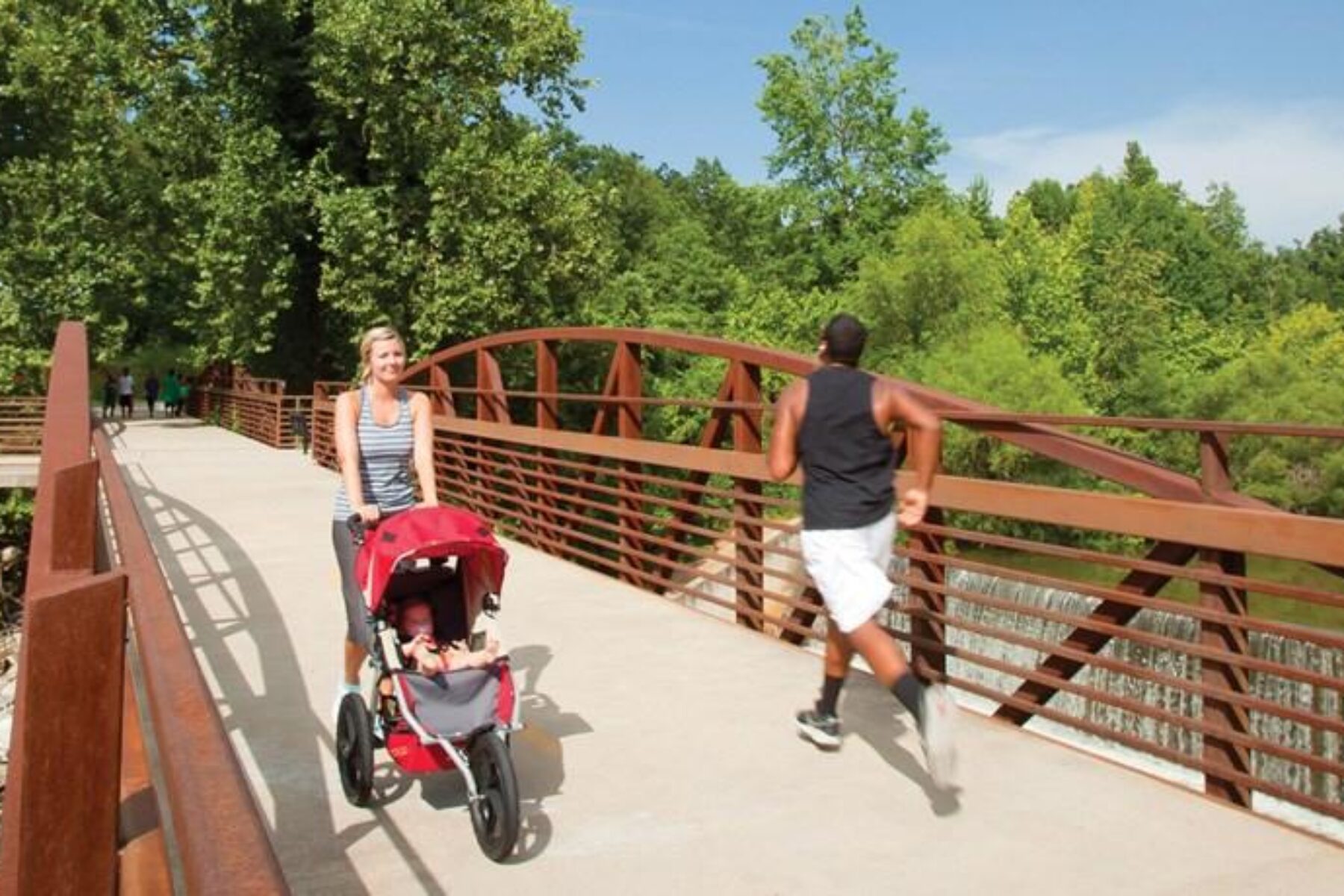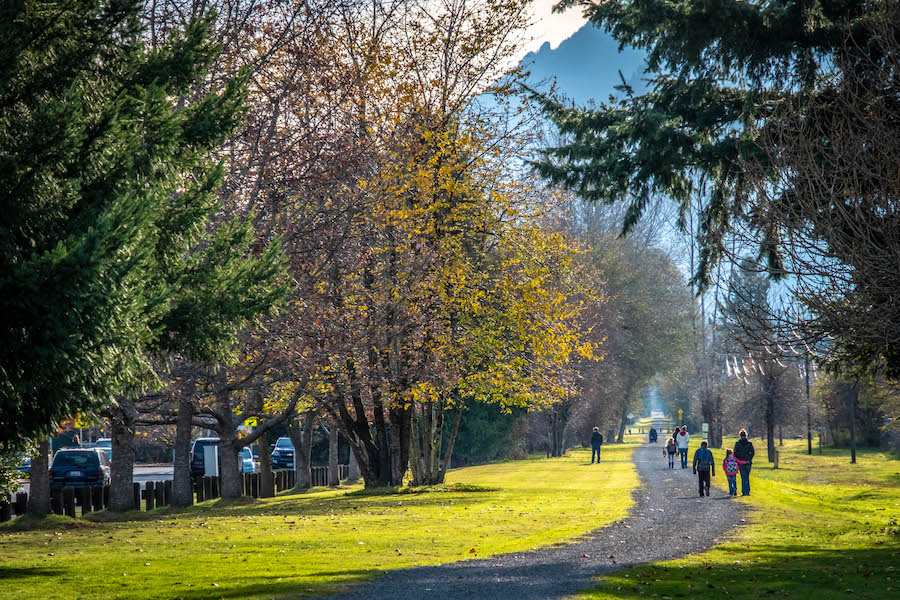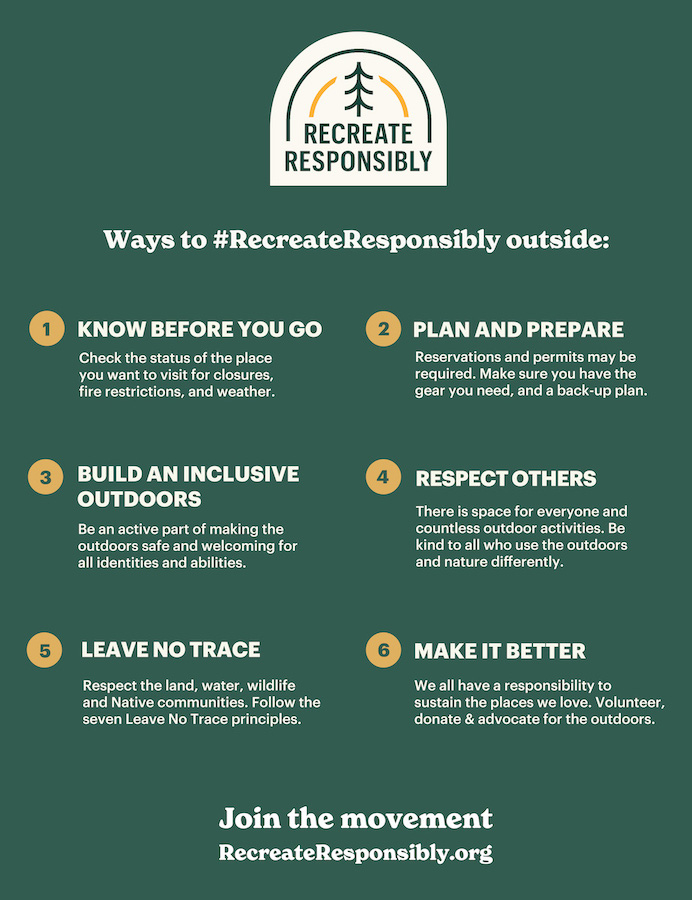6 Tips to Share the Trail and Recreate Responsibly

Over the past few years, spending time outside on trails has grown in popularity. When you’re on the trail, chances are you’ll meet folks of all different ages and abilities, and with many different experiences and interests. They may be catching up with a friend on a walk, helping their little ones burn off some energy, logging their daily miles or using the trail to get where they need to go.
“When we look at the moment we’re in right now, we have a huge opportunity to introduce the joy and meaning of trails to more people,” said Brandi Horton, vice president of communications at Rails-to-Trails Conservancy. “This is a whole new chance for trails to become a part of people’s everyday lives.”

That means it’s more important than ever to share the trail and recreate responsibly so we can all stay safe, and so that everyone feels welcome and included in these spaces. Here are six tips that will help make every trip safe and fun for everyone.
1. Use safe speeds.
When it comes to safe and respectful trail use, speed should be a big consideration. RTC’s first etiquette tip is to use safe speeds. Some trails have a speed limit, but more importantly, the speed that you use should make the most vulnerable trail user—like people walking, kids or folks with disabilities—feel safe and comfortable. Similar to your neighborhood street, imagine your kids are playing there, and travel at a speed that would keep them safe. Trails are meant for all of us, and using a safe speed shows respect for your fellow trail users.
2. Keep right, pass left.
Whether you’re walking, running or rolling, staying as far right as is safely possible is a great rule of thumb for trail use. If and when you’re ready to pass, do so on the left. Indicate when you’re passing with a ding of a bell or a friendly “on your left!” and give the people you are passing plenty of notice. Passing shouldn’t be chaotic—wait for a time when it’s safe to pass and when there is plenty of room to do so. By keeping right and passing left, you’re staying safe and encouraging others to follow suit.
“In the District of Columbia, some of our most popular urban trails see over 2,300 users per day,” said Stephanie Piperno, trails planner with the District Department of Transportation. “At peak times, our trails are bustling with people walking their dogs, roller blading, running or traveling by bike. It is important to be aware of your surroundings and know that people are traveling at different speeds. To make space for people who are looking to pass, be sure to stay on the right side of the trail, and know that people may be passing you on your left side. Be courteous to your fellow trail users and announce when you plan to pass someone to avoid startling them!”
3. Standing still? Stand aside.
We all have our reasons for stopping while we’re out on the trail; maybe you need to respond to a text message, re-tie your shoe, fix a flat or look at the map. Whatever the reason, take a few seconds to position yourself off the trail; it doesn’t take much, just a step or two, to be in the clear. In the case of a bridge or tunnel, we recommend taking that pause off to the side before or after passing through due to the lack of a shoulder to pull over and decreased visibility. This will keep you and other trail users safe by allowing the flow trail traffic to continue unencumbered. And when you’re ready to begin again, remember to look in both directions before rejoining the action.
4. Mind your pets.
Being a responsible pet owner means you have your animal on a leash, are being mindful of local rules about where pets are or are not allowed and are picking up after them. It’s also important to consider the impact pets may have on nearby wildlife.
“Our pets are often our best companions and enjoy our trails as much as we do,” said Kimberly Bradley, trails and greenways coordinator for the Connecticut Department of Energy and Environmental Protection State Parks Division. “For their safety and our fellow trail users, it is important to keep them on a leash, as bicycles, horses and wildlife can result in unexpected interactions. We also need to remember to clean up after our animals to keep the trails in a condition everyone can enjoy—and to protect our waterways and natural resources.”
5. Be alert.
Staying focused is an important part of being a responsible and respectful trail user. Be present on the trail and keep your attention on what’s occurring around you.
“The dynamic and changing conditions in nature enhance the thrill we experience when hitting the trails,” Bradley said. “It is essential to stay alert, plan ahead with appropriate gear and clothing, and let our loved ones know our outdoor plans. Sharing trails with a range of trail users including hikers, cyclists and equestrians can be present a range of needs and expectations, but simply a smile and ‘hello’ can let folks know you are aware of them and build our trail community.”
6. Know and follow the rules.
All trails have slightly different rules, depending on the local conditions, needs of the community and governance of different trail managers. You can find out more about the specific rules of your local trail by checking online before you go or reading a kiosk at a trailhead. You can find trail manager information using RTC’s free trail-finder app and database, TrailLink™. Being familiar with local guidance will help you be a good trail steward and contribute to building a collective spirit of welcomeness for all trail users.

As you plan your time on the trail, another helpful resource is the Recreate Responsibly framework. “Recreate Responsibility is a universal perspective on outdoor recreation, of which trail use is a part,” said Horton. “The themes are common calls to action about how we want to show up, take care of the places we love and take care of the community.”

The throughlines for etiquette in outdoor recreation and trail use are the same for building community more broadly: respect and kindness. “Always remember the golden rule of treating people how you’d like to be treated,” said Horton. “How would you like people to support you? How would you like people to welcome you into that space? Be kind, be respectful, and be predictable. At the end of the day, kindness goes a really long way.”


Donate
Everyone deserves access to safe ways to walk, bike, and be active outdoors.